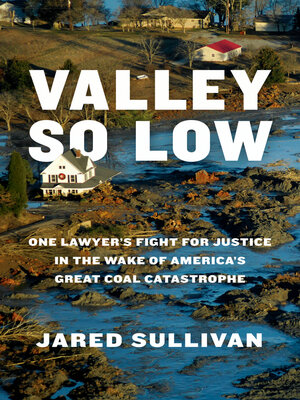Valley So Low
ebook ∣ One Lawyer's Fight for Justice in the Wake of America's Great Coal Catastrophe
By Jared Sullivan

Sign up to save your library
With an OverDrive account, you can save your favorite libraries for at-a-glance information about availability. Find out more about OverDrive accounts.
Find this title in Libby, the library reading app by OverDrive.



Search for a digital library with this title
Title found at these libraries:
| Loading... |
A riveting courtroom drama as the victims of one of the largest environmental disasters in U.S. history pursue justice in federal court — with the help of a country lawyer determined to challenge the notion that, in America, justice can be bought
For more than 50 years, a power plant in the little town of Kingston, Tennessee, burned fourteen thousand tons of coal a day, gradually creating a mountain of ashen waste 60 feet high and covering 84 acres. On December 22, 2008, an earthen embankment that contained the waste broke, unleashing a lethal wave of coal sludge that covered 300 acres, damaged nearly 30 homes, and precipitated a cleanup effort that would cost more than $1 billion—and the lives of more than 50 cleanup workers.
Jim Scott, a small-time personal-injury lawyer, agreed to represent the workers after they began to fall ill from having inhaled the toxic coal waste. That meant doing legal battle against the Tennessee Valley Authority, a colossal, federally owned power company that was a cornerstone of President Franklin D. Roosevelt's New Deal. Scott and the team he hastily assembled gathered extensive evidence of malfeasance: threats against workers; retaliatory firings; disregarded safety precautions; and test results, either hidden or altered, that would have revealed harmful concentrations of arsenic, lead, and radioactive materials at the cleanup site.
The lawsuit that Scott pursued on the workers' behalf was about their illnesses, no doubt. But it was also about whether blue-collar employees could beat the C-suite; if self-described "hillbilly lawyers" could beat elite corporate defense attorneys; and whether strong evidence could beat fat pocketbooks. Perhaps, above all, the case was simply about whether the federal government had failed its people.
For more than 50 years, a power plant in the little town of Kingston, Tennessee, burned fourteen thousand tons of coal a day, gradually creating a mountain of ashen waste 60 feet high and covering 84 acres. On December 22, 2008, an earthen embankment that contained the waste broke, unleashing a lethal wave of coal sludge that covered 300 acres, damaged nearly 30 homes, and precipitated a cleanup effort that would cost more than $1 billion—and the lives of more than 50 cleanup workers.
Jim Scott, a small-time personal-injury lawyer, agreed to represent the workers after they began to fall ill from having inhaled the toxic coal waste. That meant doing legal battle against the Tennessee Valley Authority, a colossal, federally owned power company that was a cornerstone of President Franklin D. Roosevelt's New Deal. Scott and the team he hastily assembled gathered extensive evidence of malfeasance: threats against workers; retaliatory firings; disregarded safety precautions; and test results, either hidden or altered, that would have revealed harmful concentrations of arsenic, lead, and radioactive materials at the cleanup site.
The lawsuit that Scott pursued on the workers' behalf was about their illnesses, no doubt. But it was also about whether blue-collar employees could beat the C-suite; if self-described "hillbilly lawyers" could beat elite corporate defense attorneys; and whether strong evidence could beat fat pocketbooks. Perhaps, above all, the case was simply about whether the federal government had failed its people.






